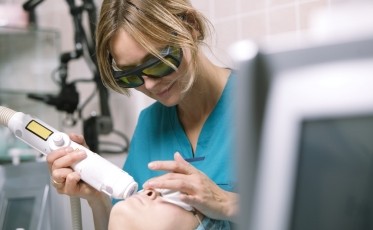Rosacea is a chronic skin condition nobody wants. It leaves a person with flushing and visible blood vessels, particularly on the face. At the same time, small and pus-filled bumps may appear.
You may experience your face flaring up for weeks before calming down for a while. Should you be diagnosed with this skin condition, do not feel hopeless. Laser or light therapy can treat it. This article will tell you about what you need to know about the treatment of this condition.
How to Treat Rosacea
The treatment depends on the severity of your condition. Dermatologists recommend the following:
- Medications
- A skincare plan
- Light or laser therapy
Your dermatologist would recommend the last one only if your rosacea has caused your blood vessels to become visible on your skin. The treatment can help you reduce the skin redness and also the visibility of the blood vessels.
How to Deal With the Redness
One of the biggest challenges people with rosacea encounter is hiding their flushing faces. Redness is the most common scenario that they usually deal with. Unfortunately, the current treatments for it only provide temporary solutions.
As mentioned earlier, light or laser therapy can help reduce the redness of your skin. Your dermatologist might also recommend you take medications to manage it. While they could help for a while, the redness could eventually come back. There are few cases when medication can totally clear out the redness, but more studies and research are needed to provide a more definite solution.
When Getting Light or Laser Therapy
Light or laser therapy might be the only treatment you could have for rosacea for now. Should your dermatologist recommend you undergo more sessions, expect them to happen three to four weeks apart. Undergoing this therapy for one to three sessions could help you reduce 50 to 70 percent of the visible blood vessels. Depending on your skin, a 100 percent reduction in redness is possible.
The results could last three to five years. Treated blood vessels would no longer reappear. However, your face can form new ones.
On Treatment Side-Effects
Side effects depend on who is conducting the procedure. That is why it is crucial that you secure the therapy from an experienced dermatologist who has done the treatment many times. Your doctor should consider your medical history before creating your treatment plan as well, and they must have the skill to tell whether laser therapy is the best treatment for your condition or not.
If they do not showcase any of the criteria mentioned, you might want to reconsider your choice.
As for the physical effects, you might experience some but expect them to fade within two weeks. Here are some of the side effects to expect:
- Rash of purple or red spots on your face
- Skin tightening
- Itchiness
- Pain
- Scarring (should be a rare side effect if your dermatologist knows how to perform the laser well)
On Skin Thickening
If the rosacea causes thickness on your face, your dermatologist might recommend an in-office surgery and laser resurfacing. Those who undergo the treatment see an immediate improvement in their face condition compared to those who only wait until their skin feels normal again.
Conclusion
Laser or light therapy is the best solution you have now for your skin condition, but remember to take it only if your dermatologist recommends it. Currently, researchers are conducting more studies on how laser and light treatments could bring a permanent solution to rosacea. However, while they are still searching for answers, your only way out, for now, is to listen to your dermatologist’s recommendations.
If you are interested in laser solutions for your rosacea, we offer light pod lasers and alma lasers for this skin condition. Alma lasers can reduce the size of the vessels that cause skin redness, while light pod lasers can cause these vessels to disintegrate. Z Med Clinic is not only a wellness clinic in Houston. We also offer advanced laboratory services, cosmetic procedures, laser services, and more.
